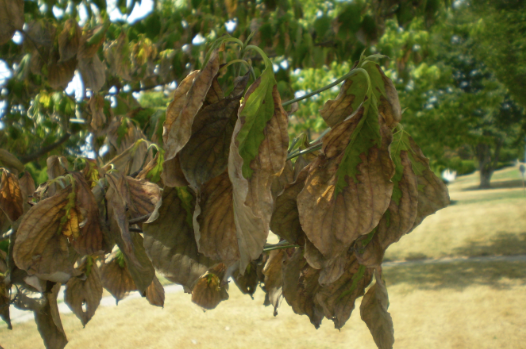Over or Under Watered: Simple Signs to Look For In Your Tree

Proper watering is essential for the health and well-being of trees. However, it can be challenging to determine if a tree is getting too much or too little water, especially for those new to plant or tree care. In this article, we’ll explore some simple signs to help you identify if a tree is over or under watered and how to adjust your watering routine accordingly.
Signs of Overwatering:
- Wilting Leaves: Surprisingly, wilting can be a sign of overwatering. When a tree receives too much water, its roots may become waterlogged, depriving them of oxygen. This can cause the leaves to droop or appear limp, even though the soil is wet.
- Yellowing Leaves: Overwatered trees may also exhibit yellowing leaves, especially near the bottom of the canopy. Excess water can leach essential nutrients from the soil, leading to nutrient deficiencies and yellowing foliage.
- Fungus and Mold Growth: Overwatering creates a moist environment around the tree’s base, making it prone to fungus and mold growth. If you notice fungal growth, like mushrooms or slimy patches, it could be a sign of excessive moisture.
- Soggy Soil: Dig a few inches into the soil around the tree’s root zone. If the soil feels consistently soggy or waterlogged, it indicates overwatering.
Signs of Underwatering:
- Wilting Leaves: Just like overwatering, underwatering can also cause wilting leaves. When a tree lacks sufficient water, its leaves may droop or curl as a survival mechanism to conserve moisture.
- Dry and Cracked Soil: Check the soil around the tree. If it appears dry and cracked, it indicates inadequate water supply.
- Brown and Brittle Leaves: Underwatered trees may develop brown and crispy leaves, particularly towards the edges of the leaves or throughout the entire canopy.
- Reduced Growth: Insufficient water can slow down a tree’s growth, leading to smaller leaves and fewer new shoots.
Adjusting Your Watering Routine:
To ensure your tree gets the right amount of water:
- Observe: Pay attention to the signs mentioned above and observe your tree regularly to spot any changes.
- Check Soil Moisture: Use a soil moisture meter or stick your finger a few inches into the soil to assess its moisture level.
- Water Deeply: When watering, ensure the water reaches the tree’s root zone. Deep watering encourages the roots to grow deeper into the soil.
- Watering Schedule: Adjust your watering schedule based on weather conditions, soil type, and the specific needs of your tree.
- Mulch: Applying a layer of mulch around the tree can help retain soil moisture and prevent over evaporation.
In conclusion, being attentive to your tree’s needs and understanding the signs if your tree is over or under watered can help you maintain its health and vigor. By adjusting your watering routine accordingly, you’ll ensure that your tree thrives and flourishes for years to come.




